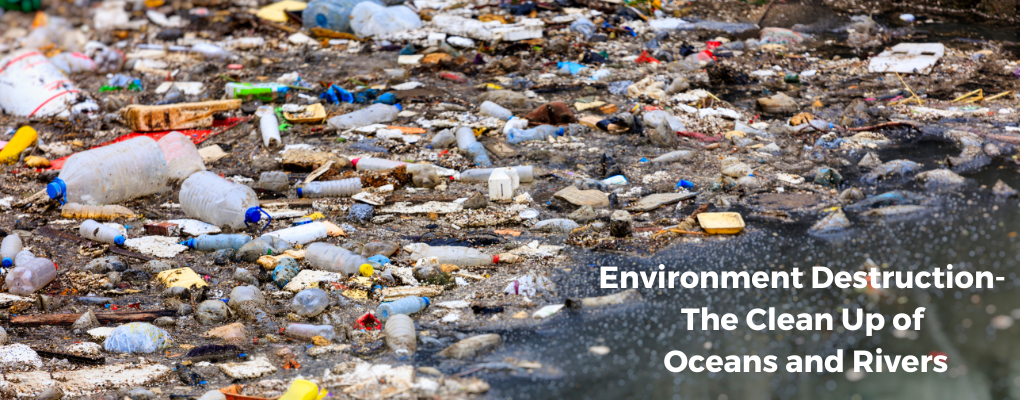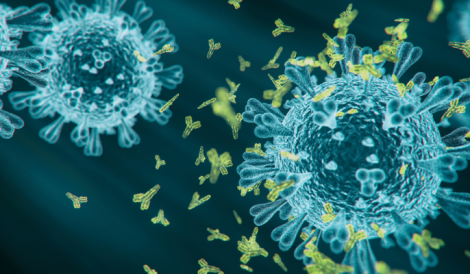Our beautiful earth that is so vibrant and full of life is systematically being destroyed by man and his dependence on industrial made goods, intensive mining of rare minerals for so called green energy electric cars etc. and large scale agriculture that all result in physical destruction of the land and seas, as well as from toxic pollution and non biodegradable products like plastics. Adding to the environmental destruction is poor management of dangerous toxins and waste products produced by manufacturing and mining practices. Acid rain and now chemtrails are dumping large amount of toxins on the land and in the waters as well as disrupting weather patterns that are also having a huge detrimental effect. Then industrial agriculture and forestry clearing are resulting in soil degradation, poisoning and destroying the land, killing of insects and animals in the food chain that rely on them with the use of herbicides and pesticides whose run off gets into the rivers, oceans and water supplies. Genetically modified crops and organisms along with the toxins cause reproduction issues and alien species that threaten existing species of plants and animals. Then along come giant solar and wind farms who not only take farming land out of use but also cause harm to wildlife and their parts are non recyclable or biodegradable so we end up with wind farm and solar panel graveyards.
A major issue for our oceans is the Great Pacific Garbage Patch that is an area twice the size of Texas where more than 200 million pounds of waste mostly plastics congregate due to the nature of the ocean currents. Over time the plastic breaks down into micro-plastics that end up in the food chain. Very few sea creatures and animals including humans don’t have micro plastics in their bodies. “Recent research from just the past couple of months tells us that now about 0.5% of our brains, by weight, are now plastic.”(David Avocado Wolfe) These problems will keep on getting worse if we don’t clean up the environment by changing industrial and farming practices as well as our own behaviour and reliance on plastics, cheap processed foods, and what we do with our waste and unwanted goods.
In this weeks GEMA Special Report the focus is on the rivers and oceans and what a few amazing people are doing to reverse the harm being done by man. One young man who is making a big impact is Boyan Slat from the Nederland who started the organisation “The Ocean Cleanup”, who are doing research and producing products to clean up the Pacific Garbage Patch as well as rivers to remove the plastics before they get into the ocean. On September 6th, 2024, they announced what it will concretely take to clean the Great Pacific Garbage Patch which would be about $4 billion over 5 years. More on how they are cleaning the Great Pacific Garbage Patch and reducing the amounts of plastics from rivers around the world contributing to it below.
How the oceans can clean themselves: Boyan Slat at TEDxDelft
18-year-old Boyan Slat combines environmentalism, entrepreneurism and technology to tackle global issues of sustainability. After diving in Greece, and coming across more plastic bags than fish, he wondered; “why can’t we clean this up?” While still being on secondary school, he then decided to dedicate half a year of research to understand plastic pollution and the problems associated with cleaning it up. This ultimately led to his passive clean-up concept, which he presented at TEDxDelft 2012. Working to prove the feasibility of his concept, Boyan Slat currently gives lead to a team of approximately 50 people, and temporarily quit his Aerospace Engineering study to completely focus his efforts on The Ocean Cleanup.
Young Man Who Said He Could Make The Ocean Clean Itself Was Right
When he was just 18 years old, Boyan Slat climbed up on the stage at a TEDx Talk conference and gave his first talk about cleaning up the ocean. He laid out this idea of cleaning the Great Pacific Garbage Patch, one enormous and ever growing island of plastic and all sorts of garbage in the north Pacific Ocean. First discovered by sailor and ocean researcher Charles Moore when he was participating in the Transpacific Yacht Race, the island came to be because of the effects of a gyre, which is a swirling vortex of ocean currents, that draw the trash together.
Now 23 years of age, the young man who began building engineering projects since the age of two and really impressed the world when he scored a Guinness World Record at the age of 14 when launched 213 water rockets simultaneously, Boyan founded the The Ocean Cleanup in 2013. They develop tech that would rid the ocean of plastic waste.
After raising $2.2 million, Boyan’s organization launched a massive research in 2014. They studied the Great Pacific Garbage Patch to prepare for the full-scale deployment in 2020. Using the data acquired, they developed technology and set out to launch the first cleanup system in the middle of this year. Their goal is to rid the ocean of half of the debris in five years time.
Samples from the waste were removed from the Pacific and transported to a facility in the Netherlands, where they were analyzed further and sorted to help develop Boyan’s ocean cleaning technology. With the data collected, they created a free floating device anchored at a needed level, so that it may move slower than the waste it will be collecting.
The Ocean Cleanup commencing efforts to clean up the
North Pacific Garbage Patch
The Ocean Cleanup LIVE from San Francisco Bay:
Cleanup Operations Update (start at 15mins)
New Research Reveals No Elevated Densities of Neuston Within Plastic Hotspots Inside The Great Pacific Garbage Patch
Latest peer-reviewed publication reveals no elevated densities of neuston in areas targeted by The Ocean Cleanup’s cleanup operations
The Great Pacific Garbage Patch is the largest accumulation of ocean plastic in the world and a known hotspot for plastic pollution impacts. It is not only home to an estimated 100,000 tons of plastic debris, but also to floating life known as neuston, a collective of species living at the sea surface that ranges from jellyfish-like drifters to sea snails. Concerns have been raised that cleanup efforts could have an adverse effect on neuston due to the potential co-accumulation of neuston and plastic at the ocean surface.
Protecting marine life is at the core of our mission. We continuously evaluate any potential impact of our operations on the environment to ensure an environmentally sound cleanup. As part of this approach, we conduct fundamental research on the ecosystem of the Great Pacific Garbage Patch. Understanding the ecosystem we operate in is crucial to maximize our environmental benefits.
To minimize potential impacts on neuston, we need to understand the distribution of plastic and neuston inside the garbage patch and how it changes across the seasons. A few years ago, we published our first study on neuston in the Great Pacific Garbage Patch. The study found that the relationship between plastic and neuston is often nonlinear and that it varies per species. Since then, our scientists have collected hundreds of additional samples from the region. The outcome of this extensive research was recently published in the peer-reviewed journal Environmental Research: Ecology. Read more…
These ‘seabins’ are cleaning up ocean trash
Sea pollution removal boat is revolutionizing ocean clean-up
The Hidden Dangers of Plastics Pollution for Marine Animals
Clean up of the Rivers
How Does Plastic End Up In Rivers?
To rid the world’s oceans of plastic, The Ocean Cleanup intercepts river plastic to stop the leakage alongside cleaning up legacy plastic in oceans. To help us target our river interception towards the most polluted places, we develop and refine global river models. Such simulations estimate the amounts of plastic that end up in rivers, and finally the oceans, and quantify how plastic behaves as it heads towards a waterway. These calculations need lots of field data for fine-tuning – and such data is hard to find. To fill this data gap we designed and conducted a laboratory experiment on an artificial hillslope with Wageningen University in the Netherlands. The study is published in Scientific Reports.
The Research Team at The Ocean Cleanup is continuously collecting empirical data to improve mathematical river models and understand how plastic behaves in water. Working in international collaborative case studies, the methods include drone surveys on river banks, camera monitoring and physical sampling in the water, as well as deploying GPS trackers in rivers. The goal of such studies is to generate data on river plastic sources, on floating plastic pollution and on the probable routes plastic takes through rivers. To understand how plastic is transported on land, however, modellers so far had only limited data based on systems using leaves, twigs and paper and from interviewing experts.
More precise plastic pollution forecasts are essential for policymakers, researchers and our own river interception operations. We therefore conducted a large experiment on overland transport in a wind and rainfall simulator. We asked the questions “how much wind or rain does it take to move plastic?”, and “once the plastic is in motion, how fast will it move on different surfaces?”. Read more…
How To Clean Up The World’s Most Polluted Rivers
It’s estimated that every year, millions of tons of plastic enter the ocean through rivers, and as global waste generation increases, the problem is poised to worsen. But a host of companies from Baltimore, Maryland to Bengaluru, India are working on the issue, developing novel methods to capture trash from rivers before it reaches the ocean.
Robert F. Kennedy Jr.’s Hudson River Cleanup Legacy
RFK Jr. led the triumphant effort to clean up the Hudson River. His success shows that the environmental action in New York can serve as a model for similar initiatives globally. Impactful change is possible anywhere
Progress, possible tweaks, and new technology ahead
for Project Clean Lake
As the Cuyahoga River runs long, its history with pollution runs deeper. Parts of the river, like Walworth Run, still suffer from an unhealthy amount of sewage.
Solar-powered waste collecting robot cleans up polluted waters in India
ClearBot, the solar-powered waste collecting robot initially invented in Hong Kong, was deployed to several areas in India to help clean up polluted rivers and lakes. According to engineers, the machine is aimed at gathering up to approzimately 500 kilograms of garbage per day, depending on weather conditions.
China River Cleaning Robot – What an Amazing Invention!
A smarter and more flexible water surface cleaning robot invented by China. It’s a great environmental preserver designed to collect all kinds of floating objects and garbage on lakes, rivers, moats, reservoirs, parks, coastal waters and other water environments.
One month of Interceptor 006 Operations in Guatemala: Timelapse
953 truckloads of trash extracted in Guatemala this year. Here’s a timelapse of one month of Interceptor 006 operations
Interceptor 006 is located in the Rio Las Vacas, around 16 km north of Guatemala City. The Rio Las Vacas is a tributary of the Rio Motagua – one of Guatemala’s main waterways and a significant contributor to plastic emissions into the Gulf of Honduras and the Caribbean Sea.
Waste management challenges mean municipal and sanitary waste from Guatemala City is washed into the Rio Las Vacas during heavy rains, with this waste then flowing into the Rio Motagua and towards the coast. Prior to our deployment, it was estimated that up to 20 million kilograms of plastic waste was emitted from the Rio Motagua into the ocean, each year: much of it via the Rio Las Vacas.
We call our deployment in the Rio Las Vacas the Interceptor Barricade: a set of two strategically located floating booms that capture plastic while allowing the force of the flooding river to pass underneath. The booms are chained to foundations dug deep into the riverside and set in concrete, ensuring Interceptor 006 has the strength and stability needed to stop and retain such enormous quantities of trash repeatedly throughout the rainy season.
Interceptor 007 Faces the First Rain Event in LA (& stops 35,000 lbs of waste) | The Ocean Cleanup
Interceptor 007 is operational in Ballona Creek, LA County, and the first rains of the storm season have arrived – bringing the first flushes of plastic waste. Subscribe to our channel to stay updated.
See how Interceptor 007 handled its first real-life test (and how a few teething problems were solved) and listen to the reactions of LA County residents to how The Ocean Cleanup is helping reduce plastic pollution in their community.
Installing Interceptor Barriers in Jamaica
Recently we introduced new Interceptor Solutions – Interceptor Barrier and Interceptor Tender to have the right cleanup solution for diverse river circumstances. The pilot phase of this project- Interceptors 008, 009, and 010 – is already deployed in Jamaica.
The Problem of Plastic Pollution in the Rio Motagua, Guatemala | Rivers
For over three years we have been working on developing an Interceptor project in the Rio Motagua basin in Guatemala, which suffers yearly trash tsunamis, devastating the environment.
Geographic and municipal conditions mean an estimated 20,000 tonnes of plastic currently flows through the Rio Motagua into the Caribbean Sea on an annual basis. Based on this number, this one river alone is responsible for an estimated 2% of global plastic emissions into the oceans.
In May, we trialed our Interceptor Trashfence, aiming to intercept up to 20M kg of plastic flowing through the Rio Motagua into the Caribbean Sea each year. The pilot phase is completed, we’ve disassembled the Trashfence, and we’ll study the learnings from this exciting trial. Stay tuned to see our next steps as we tackle this yearly trash tsunami in the Caribbean.
Introducing Interceptor 021: Could This Be the End Of Plastic Pollution in an Important Part of
the Western Caribbean?
- The Ocean Cleanup is deploying an additional Interceptor in Guatemala’s Rio Motagua basin.
- The goal of this new deployment is to restore the Gulf of Honduras to its original state.
- This new project is a collaboration between The Ocean Cleanup and Guatemala’s Ministry of Environment (MARN).
The Gulf of Honduras – a piece of ocean wedged between Honduras, Guatemala, Belize, and Mexico’s Yucatan peninsula – has historically been one of the most plastic-polluted places on earth. Every year during the rainy season thousands of tons of plastic wash down the Rio Motagua and end up in this part of the Western Caribbean Sea.
This pollution wreaks havoc on the area’s natural environment, including more than two dozen Marine Protected Areas (MPAs) and the Mesoamerican Reef – the second largest coral reef on earth after the Great Barrier Reef. It also impacts the livelihoods of thousands of people who depend on tourism and fishing in the region.
Since 2019, The Ocean Cleanup has been working to address this problem. After several attempts, we finally achieved success in May 2023 with the deployment of Interceptor 006 in Guatemala’s Rio Las Vacas (the tributary which connects Guatemala City with the Rio Motagua). With it, we have since prevented over 10,000,000 kg of trash (equivalent to over 2200 truckloads) from flowing to the Gulf of Honduras. Read more…
The Fashion Industry’s Dirty Secret: The World’s Most Polluted River in Indonesia
The Citarum river in Indonesia is the world’s most polluted river. A reporter teamed up with international scientists to investigate the causes and consequences of this pollution.
This is a real ecological disaster because the waters of Citarum are literally suffocated by domestic waste and from chemicals dumped into the water by nearby companies. As a result, mountains of dirt and waste piled up on the river’s banks and people are forced to live among them. The invisible chemicals contaminate the water and are causing harm to animals, fish, plants and are a threat to the drinking water system.
These findings caused the Indonesian government to change its wastewater regulations. The president also recently announced a new plan to clean up the Citarum.
The fashion brands questioned in this documentary promised to better control their Indonesian suppliers.
2018 Documentary
2022 Update on Ciatrum River
Anything that can be built can be taken down’: The largest dam removal in US history is complete
– what happens next?
The Klamath River is free of four huge dams for the first time in generations. But for the Yurok tribe, the river’s restoration is only just beginning – starting with 18 billion seeds.
Brook Thompson has been fishing on the Klamath River ever since she could stand up in a boat. To Thompson and her family, who are part of the Karuk and Yurok tribes from northern California, fishing is second nature. “The river was our grocery store,” the 28-year-old explains. That was until a catastrophic fish die off happened in 2002.
“It changed everything,” Thompson remembers. “We’d always had plenty of food up until then. As a seven-year-old, the salmon were almost as big as me, and I saw thousands of their bodies piled up on the shoreline, I smelled their rotting flesh. It was apocalyptic.”
The Yurok Reservation sits on the final 44 miles (71km) of the Klamath River before it meets the Pacific Ocean – a remote strip of land where there is one convenience store attached to the local gas station. Pre-contact, their territory spanned more than one million acres (400,000 hectares). The tribe relies on the river and the land for sustenance. And in the oral history of the Yurok tribe, which extends back thousands of years, there was no record of anything like this ever happening before.
“Since time immemorial, nothing like this had ever happened to us. A whole generation of salmon died on that one day,” says Thompson. Low water flow from the Iron Gate Dam, one of four on the lower Klamath River, was found to be a “substantial causative factor”, a report from the Yurok Tribal Fisheries Program found.
A decades-long fight
The dams have long been a point of contention for the tribe, who have been campaigning for their removal since the 1990s. The river is the lifeblood for the Yuroks, and the salmon are family. “The death of salmon means the death of our entire way,” Thompson says. “Everyone is connected. Taking these dams down is a life-or-death situation for us.” Read more…
The Whanganui River in Aotearoa – New Zealand
The Whanganui River in Aotearoa/New Zealand is the first river in the world to be recognized as a legal person, as a living and indivisible being.
Māori river guardian Ned Tapa invites a First Nations Elder from Australia and his daughter, who are activists dedicated to saving their own dying river back home, on a five-day canoe trip down this sacred river. Joining them are Ned’s friends, his family, an international film crew and Ned’s dog Jimmy.
For the Māori, the Whanganui is a living being – their ancestor. This belief has been institutionalized by New Zealand law as of 2017. Granting the river legal personhood is a way of environmental protection for the river, and as a way of legally validating the Māori worldview. Read more…




